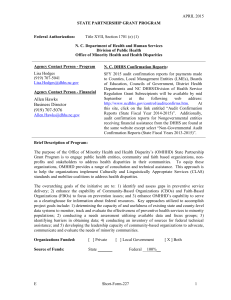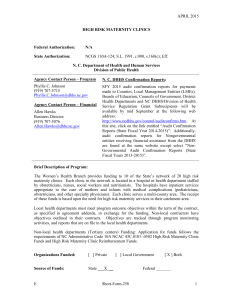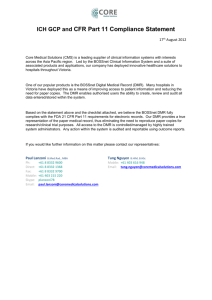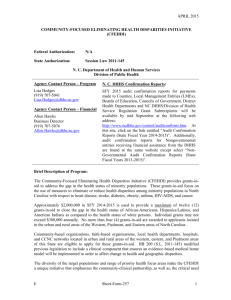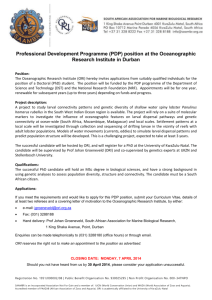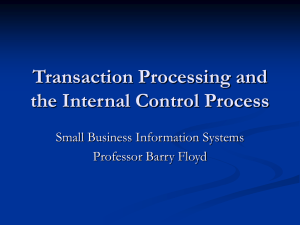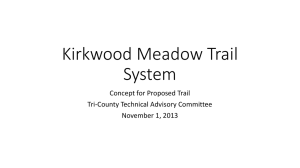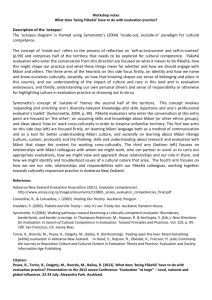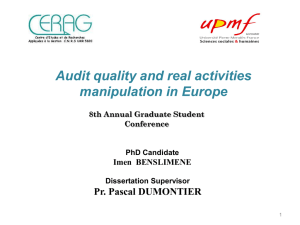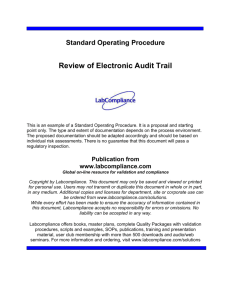Audit_Tutorial - Science Image Integrity
advertisement
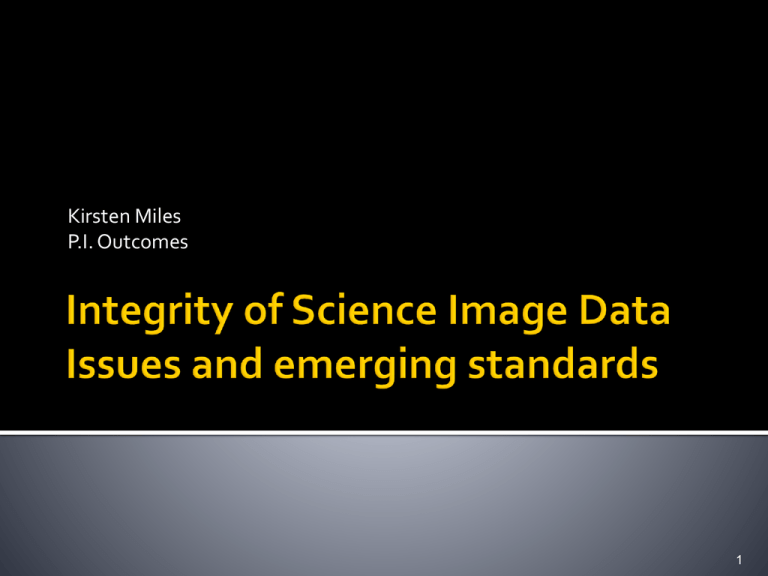
Kirsten Miles P.I. Outcomes 1 Best Practices in managing Image Data: Discuss image data issues with your P.I. early on to establish procedures Preserve the original for future access Record/document all changes to image, be able to replicate your actions Including the steps used to prepare image for publication has not been standardized yet, and therefore there are few instructions for doing so. The following slides demonstrate strategies for automating the task in three heavily used software packages, in order to reduce the time factor of preparing and including this information. 3 An Audit Trail can be enabled to track each step in a manipulation process, in Adobe Photoshop, ImageJ, and in ImagePro. It must be enabled in each of the software packages in order to record replicable steps used to process images prior to publication. Enabling the audit trail provides the most exact record of image manipulations, to maintain the integrity of image data for the scientific record. 4 The Edit History Log can be enabled to track each step in a manipulation process, in Photoshop. It must be enabled in the General Panel of Photoshop Preferences To read the history log for an image that is open and active, or from the File menu in Bridge when the image is selected, choose: >File > File Info > History >File > File Info > Advanced* *If detailed was not selected when the image was created, limited information can be gained here 5 To enable the history file; Edit>Preferences>General Panel>History Log Choose: Metadata> detailed 6 7 The Audit Trail Log can track each step in a manipulation process, in ImagePro. It must be enabled in the Preferences Panel of the ImagePro Edit drop down menu. 8 To enable the audit trail log; Edit>Preferences> Select: Generate audit trail log 9 10 ImageJ is a public domain image processing program developed at the National Institutes of Health, designed with an open architecture. Metadata has to be created using the macro to “Record”, which records all activity , and cut and pasted into a text file for a session log. Instruction are at this link and in the notes of this slide. 11 The researcher, in order to answer any questions about image data. The journal, depending on the author’s instructions The reader, and potential future researcher, in order to be able to build on the shoulders of your research. Data sharing means the potential to repurpose data is real, and accuracy important. 12 13 1. Examples of journal guidelines Rockefeller University Press (Journal of Cell Biology & 3 other journals) http://jcb.rupress.org/misc/ifora.shtml > scroll to Image Manipulation Nature journals (34 journals) http://www.nature.com/authors/editorial_policies/image.html Web resource: http://mend.endojournals.org/misc/itoa.shtml#digital 14 2. Professional guidelines Council of Science Editors, CSE’s White Paper on Promoting Integrity in Science Journal Publications — see “3.4 Digital Images and Misconduct” http://www.councilscienceeditors.org/editorial_policies/w hitepaper/3-4_digital.cfm Office of Research Integrity http://ori.dhhs.gov/ Guidelines for data management http://ori.dhhs.gov/education/products/RCRintro/c06/0c6.html tools for examining images and other digital data (see “Forensic tools”) http://ori.dhhs.gov/tools/ > “Forensic Tools” in left menu on home page guidelines for conducting inquiries http://ori.dhhs.gov/misconduct/ > “Handling Misconduct” in left menu on home page Inform yourself thoroughly about the image data guidelines of your: Journal, institution, lab, and adviser Follow proactive guidelines even if your journal doesn’t expect them yet! The onus is on you to know the boundaries in your field, institution, and publication venues. Be prepared to respond to a wider scrutiny. Please contact us with any questions, comments, or requests for training, webinars, or presentations: Kirsten D. Miles P.I. Outcomes kdm3d@virginia.edu / 434-960-5193 http://scienceimageintegrity.org/ Addeane S. Caelleigh UVA School of Medicine asc8f@virginia.edu/ 434-982-6571 19
